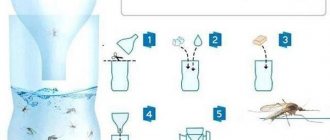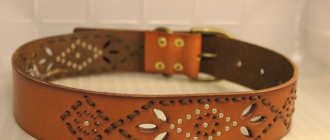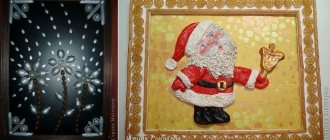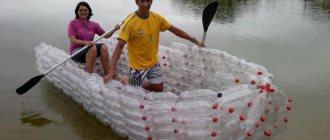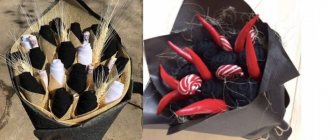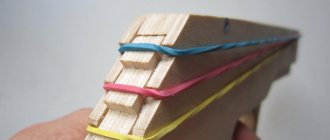Summer is the favorite time of year for most people in our country. But there are also several unpleasant aspects that appear with the arrival of warm days. And one of these moments is the invasion of flies and mosquitoes. They buzz unpleasantly and spread various diseases.
How to get rid of these harmful insects? You can buy a chemical at the store. But there is already enough chemistry in our lives. There may be allergies to various aerosols, especially in children. Therefore, many people prefer homemade devices.
Main types of homemade traps
Lures. The principle of action of baits is to lure the fly into a confined space from which it cannot escape.
Poison traps are similar in design to regular baits, but their purpose is to kill insects and not just lure them.
Velcro.
Stun guns and electric nets. Shockers kill insects with electric shock. The nets attract flies with a bright light, and then draw them into the trap with a makeshift fan.
Let's take a closer look at how you can make the most common fly traps with your own hands.
What can be used as bait?
Rotten vegetables, fruits, fish and meat, and plant juice serve as food for flies. They are attracted to putrid, sour smells and sweet foods. Taking into account their preferences, the composition of the bait in the traps is formed. The following ingredients are used:
- spoiled, soft fruits and berries;
- raw meat;
- sweet water or compote;
- lumps of sugar;
- beer;
- honey;
- juices;
- apple cider vinegar;
- kvass.
The choice of means and methods for getting rid of flies depends on the type of infested room. But the safety of the people living in it is put first. In situations where you cannot get rid of winged pests on your own, you can contact a special company that provides pest control services.
Plastic bottle
This is the simplest fly trap to use. You need to cut off the top part, and pour a couple of glasses of water with honey diluted in it into the bottom. Mix thoroughly.
You can use an alternative bait - liquid jam, compote or beer. Turn the top of the bottle upside down and place it in the bottom.
The neck should be several centimeters above the water level. This design will prevent the pest from getting out.
Reviews
Below are reviews from people who have already used similar devices and are now ready to share their impressions of this process:
- Marina: “In the summer, at the dacha, we often grill kebabs and set tables right in the fresh air; the only thing that can ruin a vacation is a large number of flies. This year we tried to use Raptor traps; just in case, we bought three at once and hung them around the site on tree branches. A pleasant surprise was that they contain not only flies, but also wasps, which often bothered us and the children playing in the area. Now they have actually forgotten that such a problem existed before.”
- Alla: “I always make fly traps myself at the dacha, and they help get rid of most other flying insects with equal success. To do this, I take any plastic containers into which you can pour a little jam, beer, honey or juice. I also add a small amount of liquid soap there so that the base becomes more sticky and the insects no longer fly out. It is advisable to use containers with a not very wide neck, this will reduce the risk of captives escaping if for some reason they do not drown or stick. The product is quite simple and does not require any special costs, but it is no less effective than any store-bought devices.”
- Yuri: “Before, I always used sticky tapes to catch flies, but since I am an amateur gardener, I recently decided to try a new and very exotic way of getting rid of them: I purchased and planted a Venus flytrap in a regular pot. Although it is recommended to place this plant in the sunniest places, I tried placing it close to the trash can in the kitchen, and even in these conditions it does fine. First of all, I was interested in how effective this method would be, but it exceeded all my expectations, there were virtually no flies in the kitchen, they all went to lunch for the Venus flytrap.”
Glass jar with funnel
Take a medium-sized jar and place bait inside (the options from the first example are suitable). Place a funnel on the neck of the jar. You can start using it.
- We buy and install an air conditioner
- Do-it-yourself windmill - the best ideas and instructions for building decorative windmills in the garden and on the site (105 photos)
Do-it-yourself walk-behind tractor - how to make a simple and reliable homemade walk-behind tractor for farming (105 photos)
Both of these traps can be made poisonous by adding an insecticide to the liquid bait.
The life cycle of a fly and the danger it poses
Flies are quite annoying insects, which (without knowing special means) are almost impossible to get rid of.
But in order to understand how best to deal with them, you need to know why they are dangerous and what their lifestyle is. So, the fly has a rather short life cycle, which can be divided into several stages.
- Laying eggs. At one time, the fly can lay up to 150 eggs. She usually chooses damp places for this - manure, garbage pits, etc. That is, all places that are unfavorable for humans are favorable for her.
- Maturation of the larva. It hatches from an egg in a fairly short time - this requires from 8 to 24 hours. The process of larval development also occurs quite quickly - from 5 to 15 days. It feeds on the food in which the eggs were laid.
- Pupation. To do this, the larva moves to a dry place and there turns into a pupa. This process takes three to four weeks.
The fly is a carrier of infection and dirt. The appearance of an adult fly.
She is able to live up to 30 days and during this fairly short period of time lay a large number of eggs (up to 2000 pieces). Since flies are born and live in rather unfavorable conditions, they are capable of carrying a large number of diseases - both parasitic and bacterial. Among the first are parasitic worms, roundworms, and salmonellosis. Among the second: cholera, typhoid, jaundice, listeriosis, etc. In addition, taking into account the habitat of flies, it is worth understanding that when it lands on food in your home, it can carry various types of dirt.
Plastic container
This do-it-yourself trap option is suitable for fruit flies (another name is fruit flies), because they are small in size and, accordingly, can easily fit into small holes.
In the container we put the favorite delicacy of fruit flies - spoiled fruits. Cover with cling film so that it fits snugly to the edges and make several holes in it.
You can use a glass instead of a container. In principle, any trap will be effective for fruit flies if it contains spoiled fruit as bait.
Tips for use
The effectiveness of fly traps will increase if several different types are used at the same time. When there are a lot of insects, it is best to make several traps of each type and install them in all rooms or distribute them throughout the garden. Catching gadflies, fruit flies and midges can also be done at night by equipping the traps with small flashlights or ultraviolet lamps.
If the winged pests have the opportunity to feed on something outside the trap, the bait will not be of interest to them, so do not leave food items in the open. Flies and flies will only become interested in hard-to-find treats when they have no other choice.
Sources
- https://poleznii-site.ru/dom/byt/lovushka-dlya-muh-svoimi-rukami-kak-sdelat-v-domashnih-usloviyah.html
- https://svoimirukami.mediasole.ru/lipuchka_dlya_muh_svoimi_rukami
- https://notklop.ru/muhi/4-sredstva/60-lipuchka-dlya-muh/
- https://WikiParazit.ru/babochki-i-moshki/lipkaya-lenta-lipuchka-ot-muh.html
- https://felisov.ru/muhi/kak-sdelat-lipuchku.html
- https://apest.ru/muhi/sredstva-ot-muh/lipuchka-dlya-muh/
- https://beetlestop.ru/lovushka-dlya-muh-svoimi-rukami/
- https://build-experts.ru/sdelat-lipkie-lenty-dlya-muh/
- https://legkovmeste.ru/poleznye-sovety/delaem-lovushki-dlya-muh-svoimi-rukami-sladkie-kleykie-i-dazhe-elektricheskie.html
- https://stroy-podskazka.ru/muha/lovushki-svoimi-rukami/
[collapse]
Sticky trap
To create such a trap, we need thick paper, liquid rosin, sweet liquid and castor oil. Cut the paper into strips of suitable width and length. Mix all the ingredients, heat it up and apply the composition to paper.
If necessary, make a loop of thick thread. Velcro is ready. Instead of this composition, you can use purchased glue against insects and rodents.
Another version of Velcro is a CD covered with an adhesive base. It is necessary to tie a loop to the disk, apply jam or honey to the surface and put it in the freezer to make the composition more viscous.
Advantages of adhesive tape
Fly tape is considered one of the most used insect control products. Its popularity is due to a number of factors:
- absence of toxic components in the composition, safety for people and pets (adhesive tapes can be used at home, in kindergartens, hospitals);
- long service life (from 1 to 6 months);
- low cost (even purchased Velcro will not require large financial outlays, but homemade ones will cost practically nothing);
- efficiency;
- versatility (the product can be used in any room, as well as outdoors).
Another advantage is the fact that sticky tapes help fight not only flies, but also other flying insects.
We must remember that the lifespan of Velcro is reduced if you use it outdoors. This is facilitated by dust and small debris falling on the sticky surface.
Ultraviolet Flashlight Trap
You can make Velcro of a more complex design. To make it you will need any unnecessary jar, for example, a tin can.
We cover the outer surface with electrical tape, and then remove it so that a sticky layer remains on the surface. We attach a flashlight inside. Insects attracted by the light will stick to the jar. This option is suitable for small individuals.
Operating principle
Sticky tape is one of the safest means used to kill flying insects. And this nuance is especially important when the trap is used in a room where children live or food is prepared.
Fly Velcro is a simple design that has a viscous and sticky component. The principle of its operation is quite simple. The tape is impregnated with a special viscous glue. The latter contains exclusively natural substances that attract flies with their aroma. An insect that touches the sticky strip hopelessly sticks to its surface, as a result of which it soon dies.
Another interesting fact is that flying insects are not frightened by relatives stuck to such a tape, but on the contrary, they are attracted. Therefore, the more flies there are on the adhesive tape, the more insects tend to land on it. Taking this feature into account, many manufacturers of such fly traps apply images of these insects to the sticky part of the product.
Stun gun
We will need a high-voltage module, an energy-saving light bulb (preferably spiral-shaped), a battery, a switch, electrical tape, and glue. Let's disassemble the light bulb into its components. We get the cap and flask. We don't need a base.
We cut a hole in the plastic cover into which we thread the switch. We thread the module itself through the cap and solder it to the switch, and the switch to the battery. Attach the module to the lid using hot glue.
The battery can be secured with electrical tape. We drill two holes in the cone, into which we pass a piece of aluminum wire. We wrap each one around the flask so that they do not touch. We cut off the excess.
At the base of the bulb from the inside we see two wires. We connect one of them to the end of the aluminum wire. There are two free contacts left inside the bulb: the second end of the wire and the “original” wiring from the light bulb.
We connect the high-voltage module to these contacts. Place the lid on the flask. The shocker is ready. It needs to be hung in a place where insects gather.
Tools Overview
The most popular and effective today are the following:
- Adhesive tape from the manufacturer Insectum Laboratory. Pack of 4 pieces. cost 40 rubles. The packaging of the product will reliably protect your home from flies throughout the year. It contains a special adhesive and pheromones.
- Velcro Raptor. The tape will protect against pests for 2 months. For a room up to 15 square meters, 1 tape is enough. Cost 30 rubles. The product contains pheromones and rubber glue.
- Dipter tape. There are 104 pieces in a box. Price for 1 piece. equal to 5 rubles. It is based on special glue and pheromones.
- Flycatcher Ted. Designed to protect up to 15 sq.m. area. Price 5 rubles. Consists of paper impregnated with glue and pheromones.
- Clean house. One tape will protect 10 square meters. m. premises. The cost for one piece is 15 rubles.
- Moskitol. Designed for an area of 10 square meters. meters. Cost 15 rubles per piece. Contains rubber adhesive and pheromones.
- Fumitox. A meter-long tape with the active ingredient attractant. To protect a room of 15 square meters. meters you will need 1-2 tapes. Cost 20 rubles per piece. It consists of a meter-long strip of paper treated with glue and special hormones that attract insects.
Source
Electric net
Necessary elements for creating an electric net: a small motor (10-20 W), a light bulb, two tin cans of different diameters, a battery, a round flat board, an aluminum plate (2 by 10 cm), two metal strips, fasteners (screws, screws, epoxy glue , rubber ring), nylon bag.
We cut out the blades from an aluminum plate and bend them, as for a fan. We make a hole in the center and put the blades on the motor shaft. We fix it with glue.
We fasten the light bulb socket with screws to the board. We connect the cartridge to the motor starter. We place the structure in a jar of smaller diameter and fasten it with screws so that the blades are a couple of centimeters below the edge of the jar. The base of the cartridge must be covered with a second can.
We put a nylon bag on the lower part of the device and secure it with an elastic band. We connect the battery. Ready. Of course, electric fly traps are more complex in design, but their effectiveness is quite high.
You can give preference to one of the types, or you can use several different homemade traps at once. An integrated approach will be more effective. However, when using any insect repellent, do not forget to maintain cleanliness and remove food from the table in a timely manner.
Proven folk methods
Before resorting to radical measures to destroy parasites, if there are large numbers, it is worth trying to drive them out. Our grandmothers used this ancient method.
They took a towel or branches of any tree with leaves in their hands, stood on the opposite side of the room from the open door, and, waving in a circular motion, drove the flies up and down towards the door. It will not be possible to get rid of all the insects, but some of them will end up outside the apartment.
Another method that does not require complex manipulations. It is necessary to darken all the windows in the room, with the exception of one, which will be a kind of light trap. Flies don't like the dark; they will fly towards a light source and end up outside. This method is not 100% effective, but other means will help exterminate the remaining insects.
Using a fly swatter, or objects that replace it - magazines or newspapers rolled into a tube. The method does not require material costs, the disadvantage is that traces of crushed flies remain on the surfaces.
Flies cannot stand the smell of alcohol; if you spray vodka from a spray bottle in a room, the insects will leave it. The method is good for an apartment or cottage, but it cannot be used in an office; problems may arise.
Aromatic essential oils repel insects; flies do not like the smells of such herbs:
- lavender;
- peppermint;
- eucalyptus;
- lemongrass;
- citronella;
- carnations;
- anise
Essential oils of these plants are added to water when cleaning rooms, and their solutions are sprayed on doors and window frames. They soak cotton pads or balls and place them on window sills, kitchen tables, and near trash containers.
You can make your own poison for flies. To 3 tablespoons of milk add 5 teaspoons of baking soda and 0.5 tablespoons of formaldehyde. Place a saucer with the mixture with the addition of crumbled bread at the location of the insects.
The product takes effect within a few hours, and after consumption the insect dies. Sweet water with ground black pepper is a mixture that is harmful to flies.
Place bouquets of herbs: tansy, castor bean, elderberry flowers, fern leaves in the room, the flies will leave the room.
A decoction of the toadflax herb is a good insect repellent.
Flies don't like the smell of cloves. Cut a lemon in half, bury 5-10 clove buds into the pulp, the aroma will repel pests for a long time. You can simply spread the buds or make a decoction and spray it on doors and windows.
The smell of geranium is unpleasant to flies; an indoor flower on the windowsill repels pests.
Basil is planted near the house; flies do not like this fragrant plant.
Bay leaf helps in fighting flies. The leaves can be laid out on windowsills, in table drawers, or prepared as a tincture; You need to take 10-15 leaves per glass of boiling water and leave for 24 hours. Wipe window frames and doors with the solution.
Place dried lavender flowers in bags or bouquets around the house, you can add clover.
Photos of DIY fly traps
An unusual option for fighting is predator plants
Plants that feed on small flies, mosquitoes and other insects. They do not require special care, tolerate unfavorable conditions well and do not take up much living space, but, nevertheless, they fight flies well.
In conclusion, it is worth noting that the reproduction of flies occurs quite quickly, which is why they are extremely popular among biologists. They are an ideal object for conducting many experiments. The genetic code of these insects has many similarities with humans. Thanks to this, scientists have the opportunity to develop new means of combating cancer and hereditary diseases.
To a greater extent, fruit flies are not pests; they process waste and enhance decomposition processes, returning minerals and oxygen to the cycle of substances, but, nevertheless, they extremely poison human life. When used in combination, the remedies proposed in this article will help make life easier and get rid of annoying fruit flies.
Tags: fruit fly, trap, hand, yours, vinegar
About the author: admin4ik
« Previous entry
How to make a converter transformer
The transformer is the most complex part of the product, so let's start with it. Winding wire onto a transformer core is a very long, monotonous and delicate process that requires patience and accuracy. First we need a B22 armor core made of 2000NM ferrite.
The armor core is a closed structure with only holes for wires. The core looks like two small cups, between which there is a bobbin, like in a sewing machine. You need to wind a thin enameled wire with a diameter of 0.1 mm around it. It can be found, for example, in an electronic alarm clock. You need to wind it carefully until there is about 1.5 mm of free space left.
For greater efficiency of the transformer, it is better to wind the wire in layers, laying thin electrical tape between them. This way you will get about 5 - 6 layers. After this, you need to insulate everything with two layers of regular electrical tape and wind 6 turns of wire with a diameter of 0.7 - 0.9 mm. On the third turn we make a retraction and finish the remaining three. Finally, we glue the cups together or wrap them with electrical tape.
History of creation.
The first fly stick was made by the Waiblingen confectioner Theodor Kaiser (1862–1930). Over the years, he, like other researchers in other countries, tried to coat cardboard with various syrups to attract insects, but the syrup ran off too quickly or dried out. The idea of wrapping cardboard in a tube and securing it with a cylinder came to him while on vacation in the Czech lands and visiting a local store that sold cardboard. In addition, he and his chemist friend were able to find the optimal combination of various ingredients to produce a sticky mixture that would retain its properties for many weeks in different temperature conditions. In 1910, Kaiser began producing fly sticks under the Aeroplan brand, although the following year it had to be renamed Aeroxon due to disputes with aircraft manufacturers.
Making an output transformer
For this we need:
Along the circumference of our pipe we need to make grooves 2 mm deep and 2 mm wide. Next, take a wire with a diameter of 0.2 mm and wind it around all sections. It is better to glue or solder a stranded wire to the ends of the wire for a more convenient connection.
Now you need to take a ferrite rod with a diameter of 100 mm and a length of 5 - 6 cm. This rod needs to be wrapped with electrical tape and wound with 20 turns of wire with a cross section of 0.8 mm. We leave 5 - 10 mm at the edges and insulate everything with electrical tape in several layers so that it fits inside the tube quite tightly.
Now you need to connect the two windings together on the side where the HV winding ends. Thus, we will have 3 outputs instead of 4: common point, end of the first winding and HV terminal.
